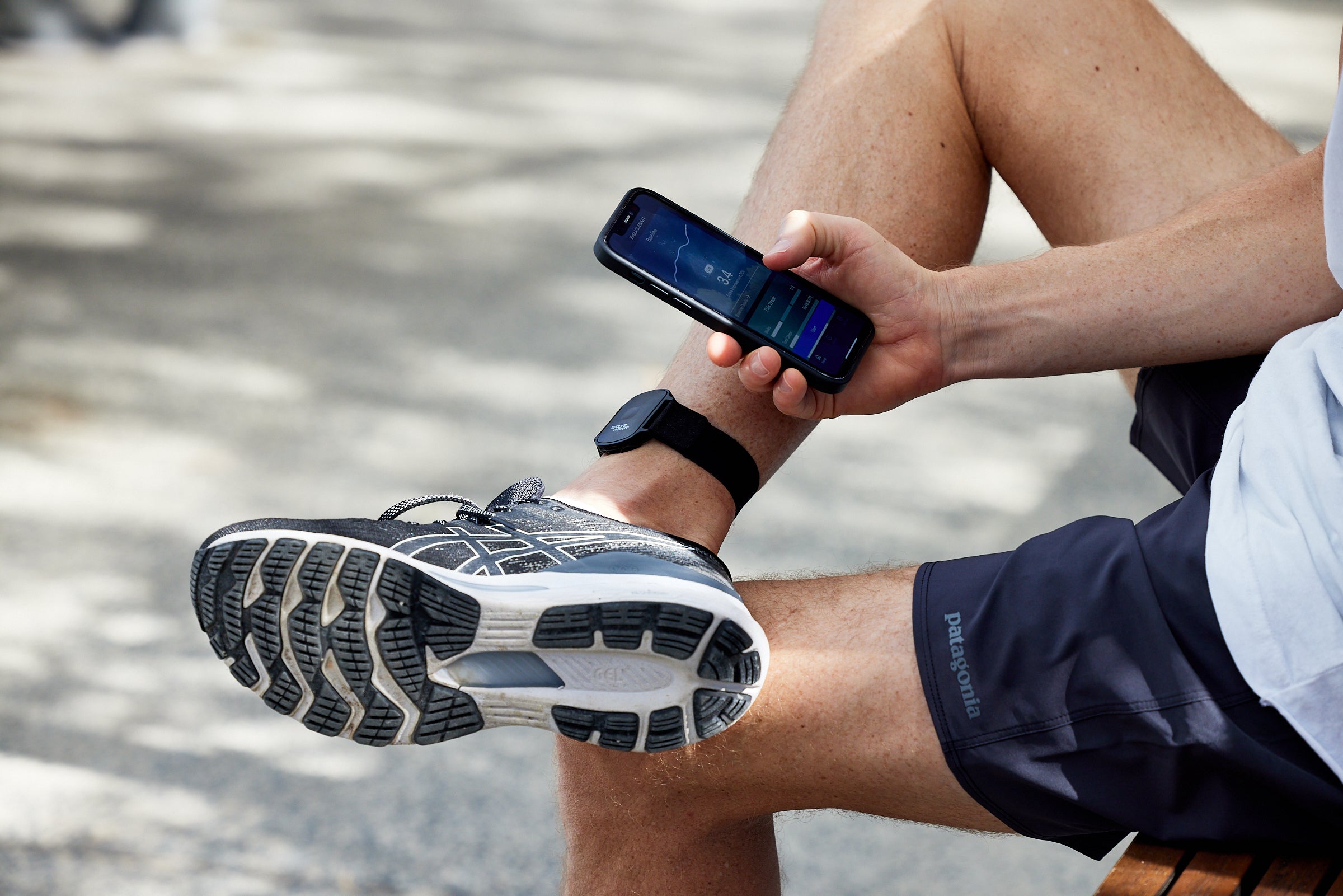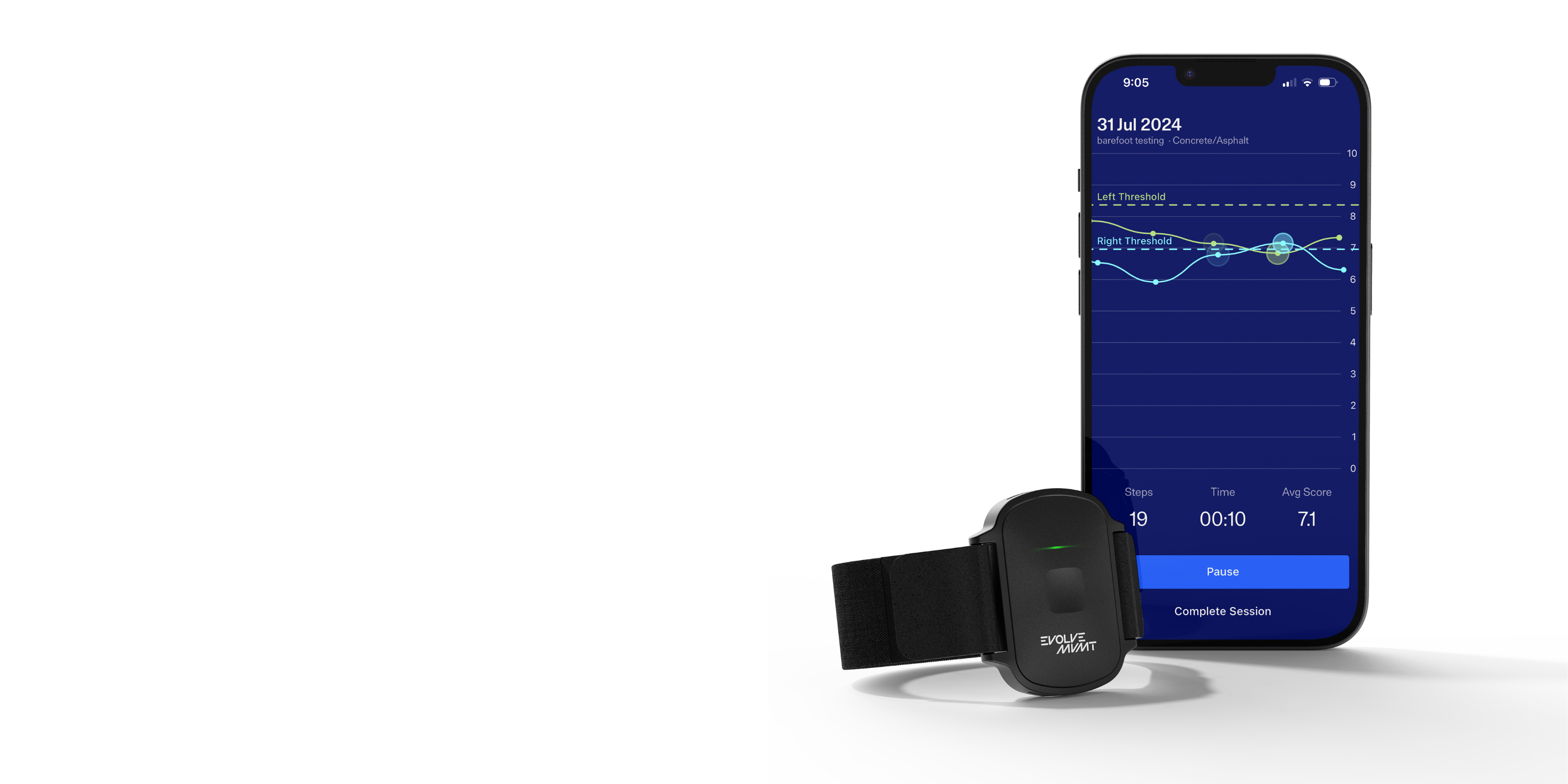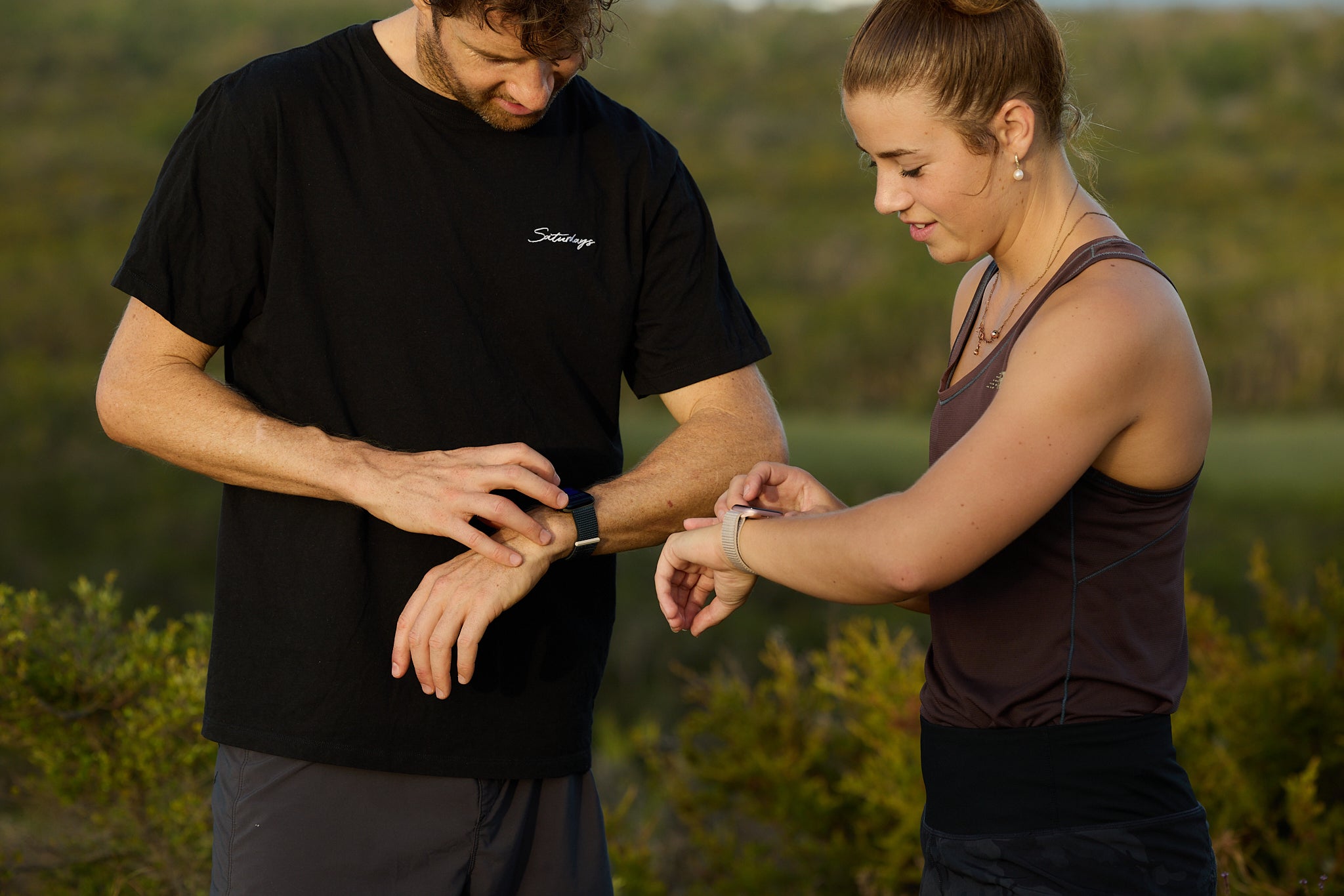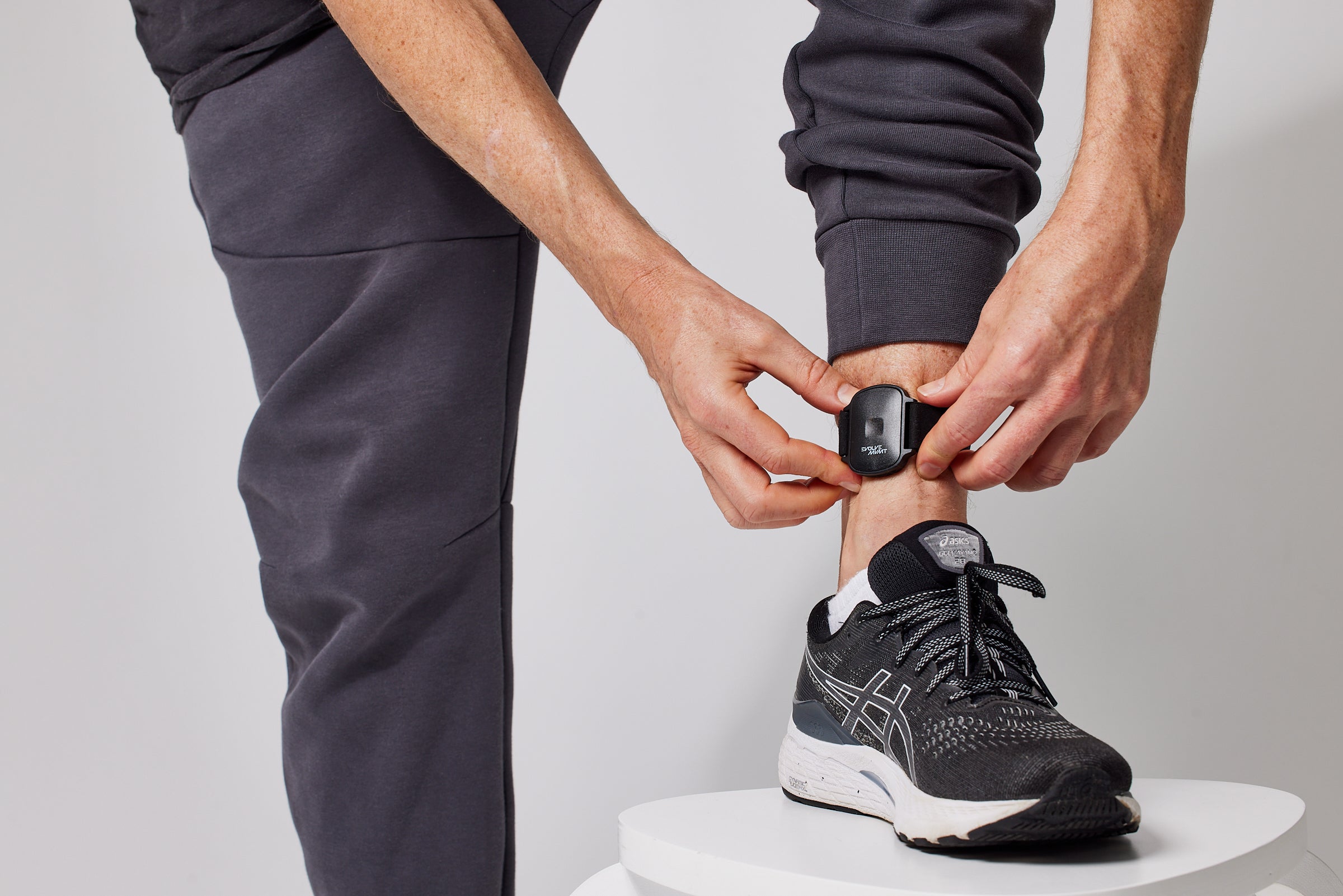World's First Wearable to Analyze Step Quality
EVOLVE MVMT ankle wearable analyzes step quality (shock absorption performance), in-clinic or in the patient’s environment (e.g., home, sporting, neuro or rehab).
Currently, there is no method to objectively analyze walking or running step performance.

"As a Sports Physician, I know how relevant shock absorption is and see the importance of EVOLVE MVMT for injured patients to recreational walkers and runners to professional athletes."
Bob Sallis - Sports Physician, Professor Emeritus Kaiser Permanente, LA Clippers, LAFC (Soccer)
How EVOLVE MVMT Works
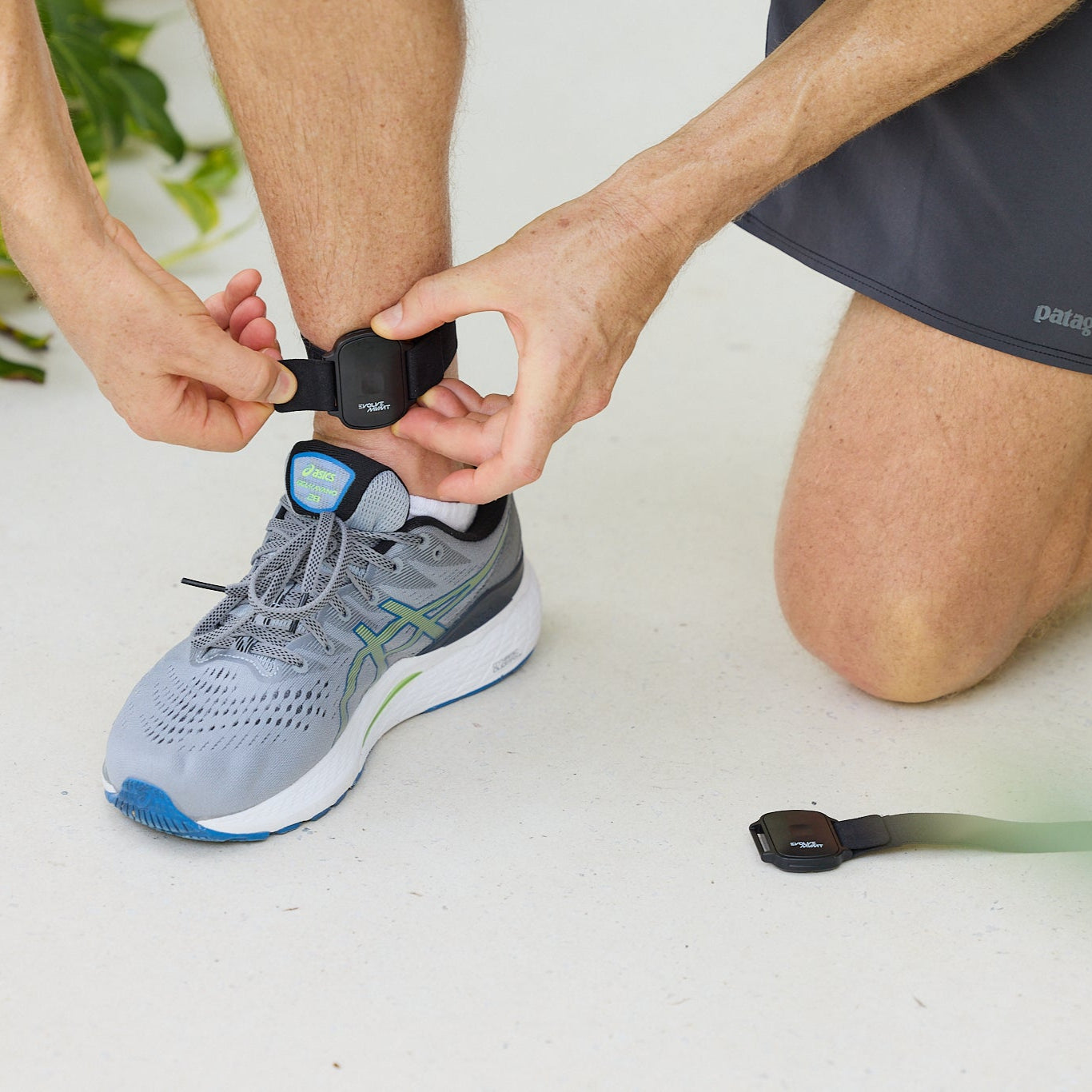
Getting started is easy. Simply strap the EVOLVE MVMT device to your patient's ankle. The device uses advanced internal algorithms to analyze your movement in real-time and sends the data wirelessly to your chosen smart device via Bluetooth.
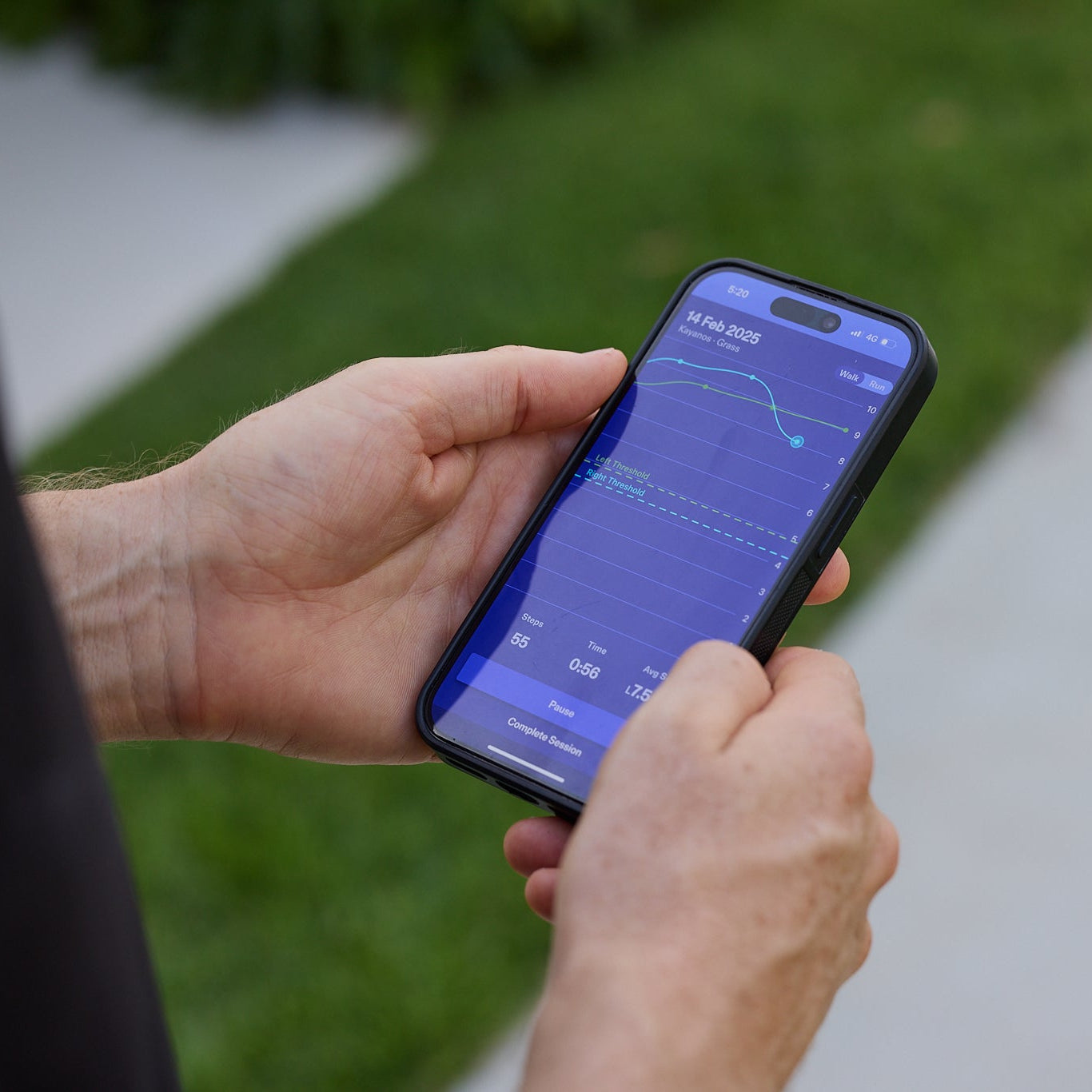
Use your phone, smartwatch, tablet or test the patient device-free. When connected, the app provides instant visual feedback with every step.
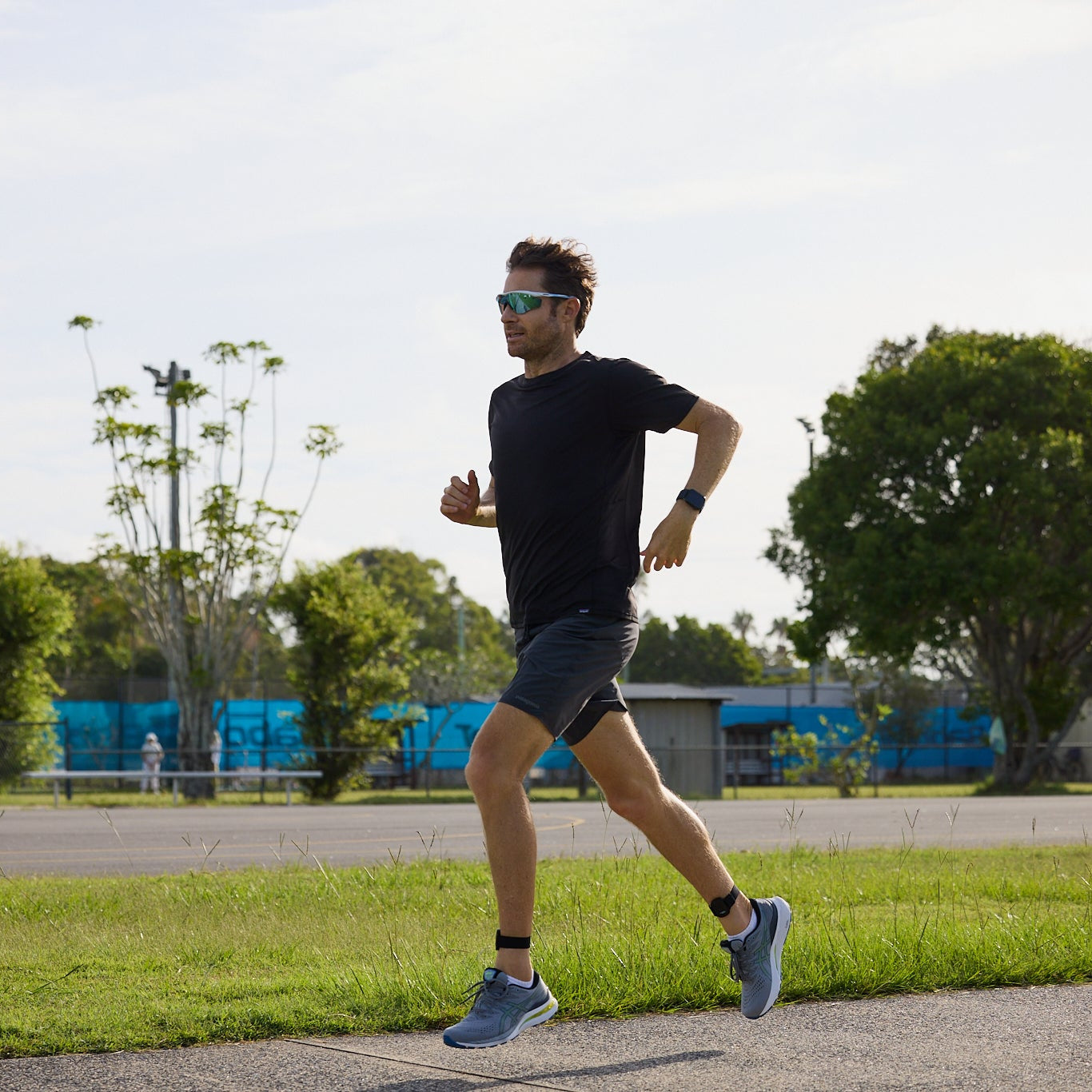
Walk or run your patient while receiving real-time step-by-step feedback. Watch their performance unfold graphically on your screen or let the ankle device guide you through light cues. The patient is also provided feedback through vibration on the ankle sensor.
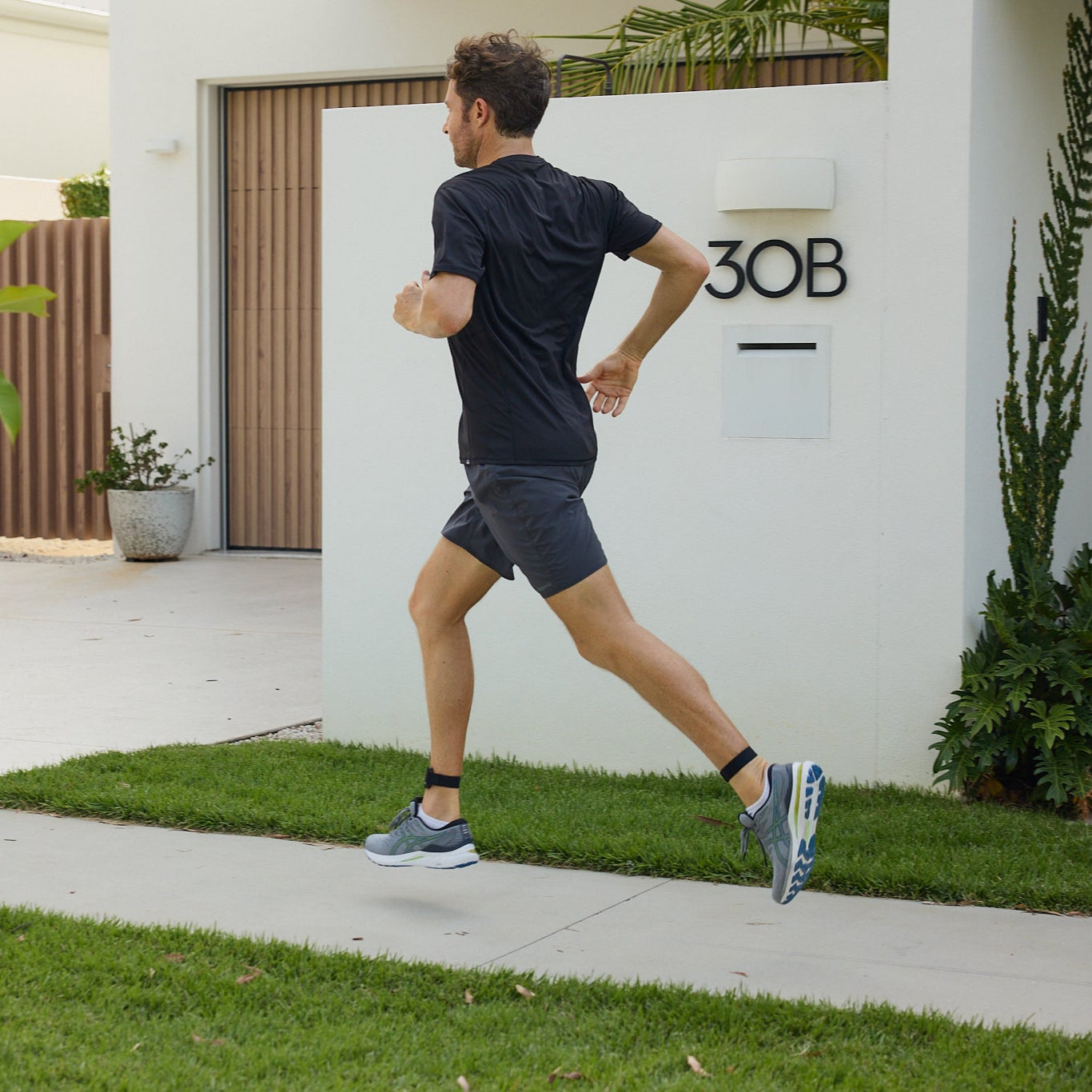
Understand how effective your treatment interventions and each individual home exercise is. By assessing a patient’s walking or running then completing one intervention or exercise, you can re-assess their walking or running again to determine if your treatment or exercise is positively affecting your patient. This revolutionizes how the elite physical therapists are treating patients and athletes.
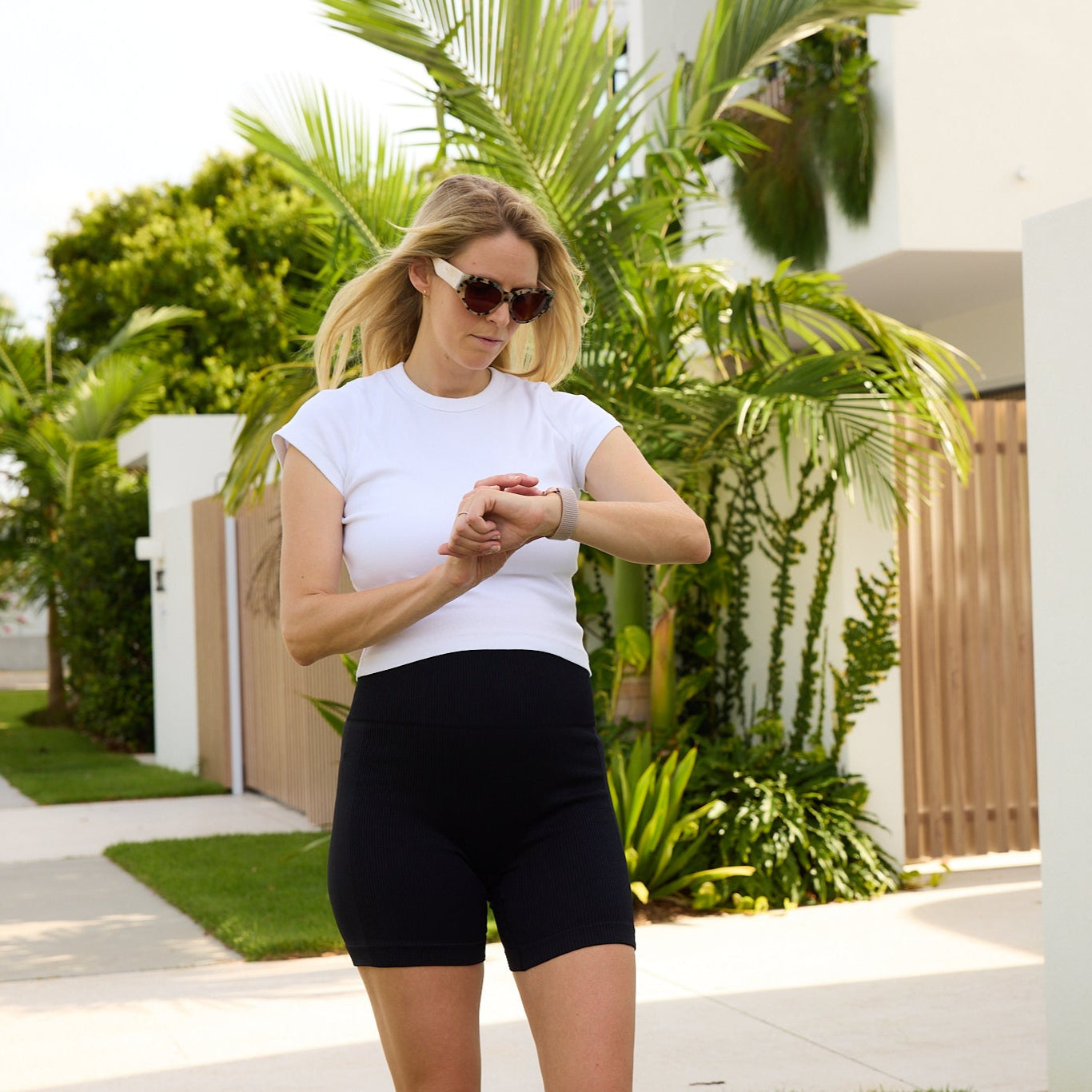
The real magic happens here. For the first time you can now assess a patient’s walking or running, step-by-step. In the clinical environment, at their home or in their exercising setting. Instead of one step in research gait lab, you get every step in that patient’s natural environment.

This isn’t just data—it’s a window into your patient’s kinematics – their performance and their potential. Whether you’re in sports, orthopedic rehabilitation, gerontology or neurology, you now have access to the quality of how a patient walks – for the first time!
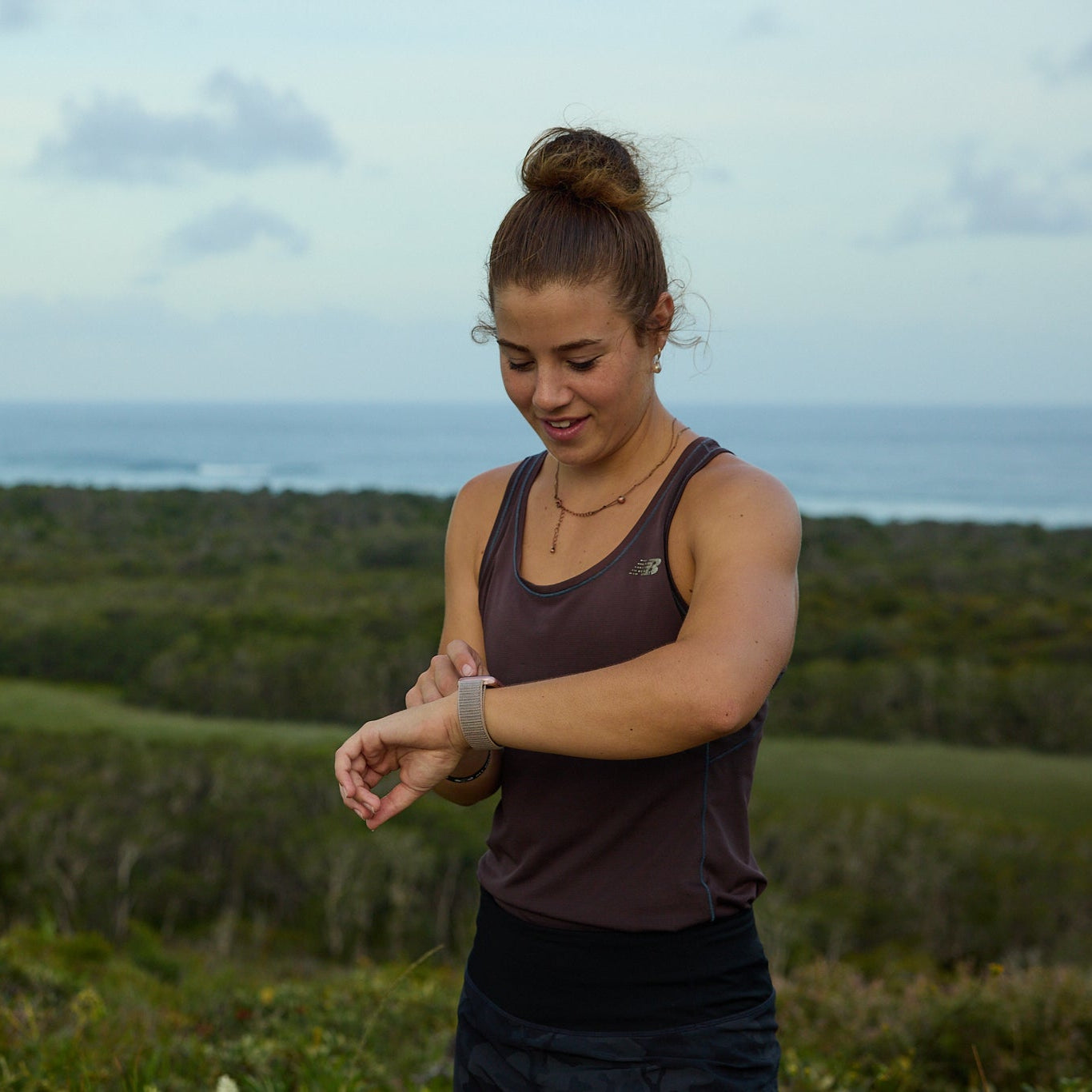
Until now, only elite teams like the NBA and MLS and world-leading institutions like the Cleveland Clinic have had access to this technology. With EVOLVE MVMT, you’re stepping into the future—empowered to make informed decisions, improve patient care and create better patient outcomes – EVOLVE to become a more insightful and more effective clinician.
Getting started is easy. Simply strap the EVOLVE MVMT device to your patient's ankle. The device uses advanced internal algorithms to analyze your movement in real-time and sends the data wirelessly to your chosen smart device via Bluetooth.
Use your phone, smartwatch, tablet or test the patient device-free. When connected, the app provides instant visual feedback with every step.
Walk or run your patient while receiving real-time step-by-step feedback. Watch their performance unfold graphically on your screen or let the ankle device guide you through light cues. The patient is also provided feedback through vibration on the ankle sensor.
Understand how effective your treatment interventions and each individual home exercise is. By assessing a patient’s walking or running then completing one intervention or exercise, you can re-assess their walking or running again to determine if your treatment or exercise is positively affecting your patient. This revolutionizes how the elite physical therapists are treating patients and athletes.
The real magic happens here. For the first time you can now assess a patient’s walking or running, step-by-step. In the clinical environment, at their home or in their exercising setting. Instead of one step in research gait lab, you get every step in that patient’s natural environment.
This isn’t just data—it’s a window into your patient’s kinematics – their performance and their potential. Whether you’re in sports, orthopedic rehabilitation, gerontology or neurology, you now have access to the quality of how a patient walks – for the first time!
Until now, only elite teams like the NBA and MLS and world-leading institutions like the Cleveland Clinic have had access to this technology. With EVOLVE MVMT, you’re stepping into the future—empowered to make informed decisions, improve patient care and create better patient outcomes – EVOLVE to become a more insightful and more effective clinician.







Understanding Shock Absorption
Poor walking and running technique creates injury causing and early degradation forces in joints and bones by not utilising your muscles and tendons the way they are designed. EVOLVE MVMT enables you to optimize your walking or running technique to unlock health benefits and enhance athletic performance.
50% joint offload means – double the joint life and faster, more effective rehabilitation.
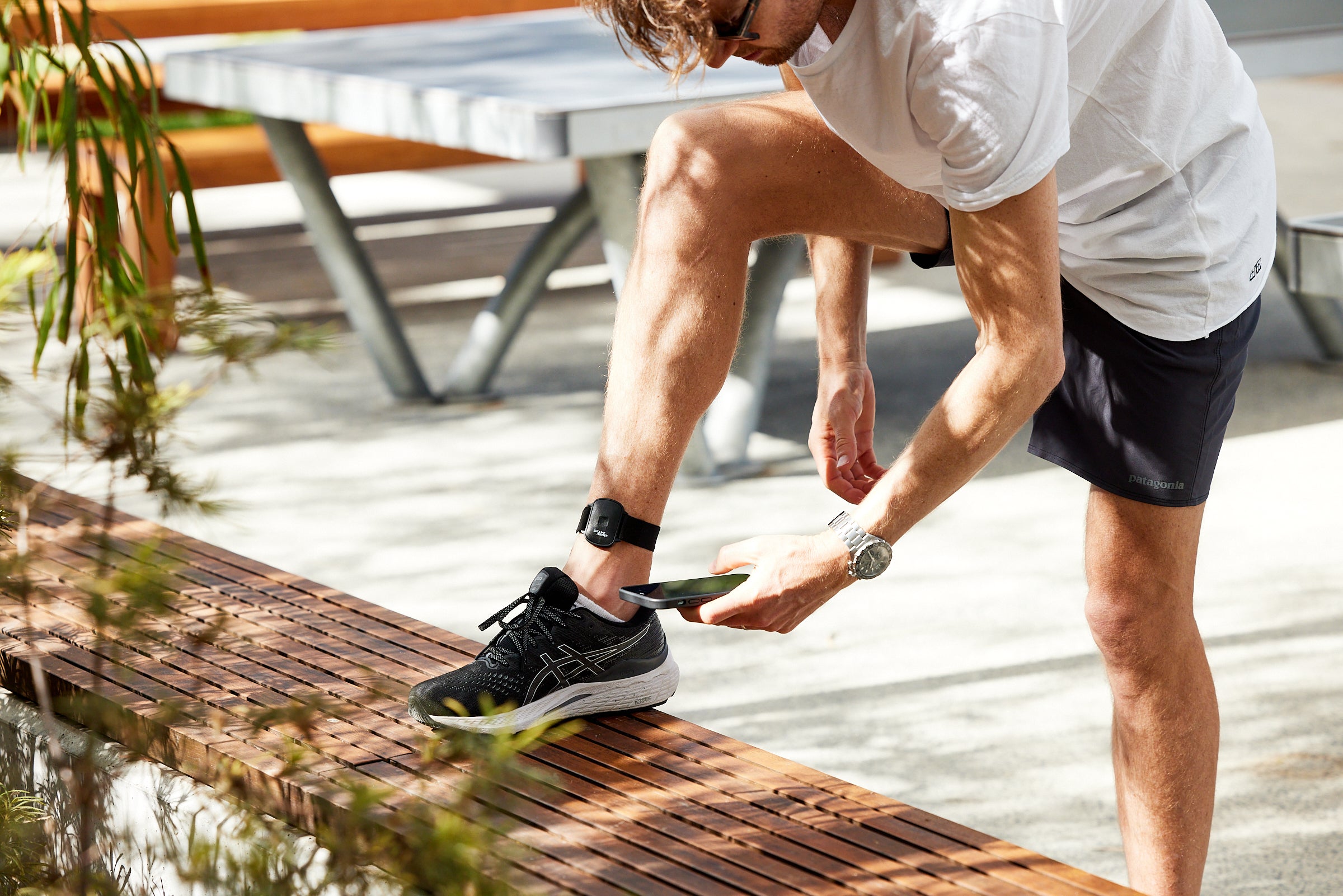
EVOLVE MVMT Benefits the Following Physical Therapy Sectors:
✔ Musculo-skeletal (all injuries from lumbar spine to toes)
✔ Osteoarthritis
✔ Neurological
✔ Gerontology (falls risk)
✔ Bone health (osteopenic, osteoporotic)
✔ Surgery prevention and post-op rehabilitation
✔ Elite sport
✔ Research
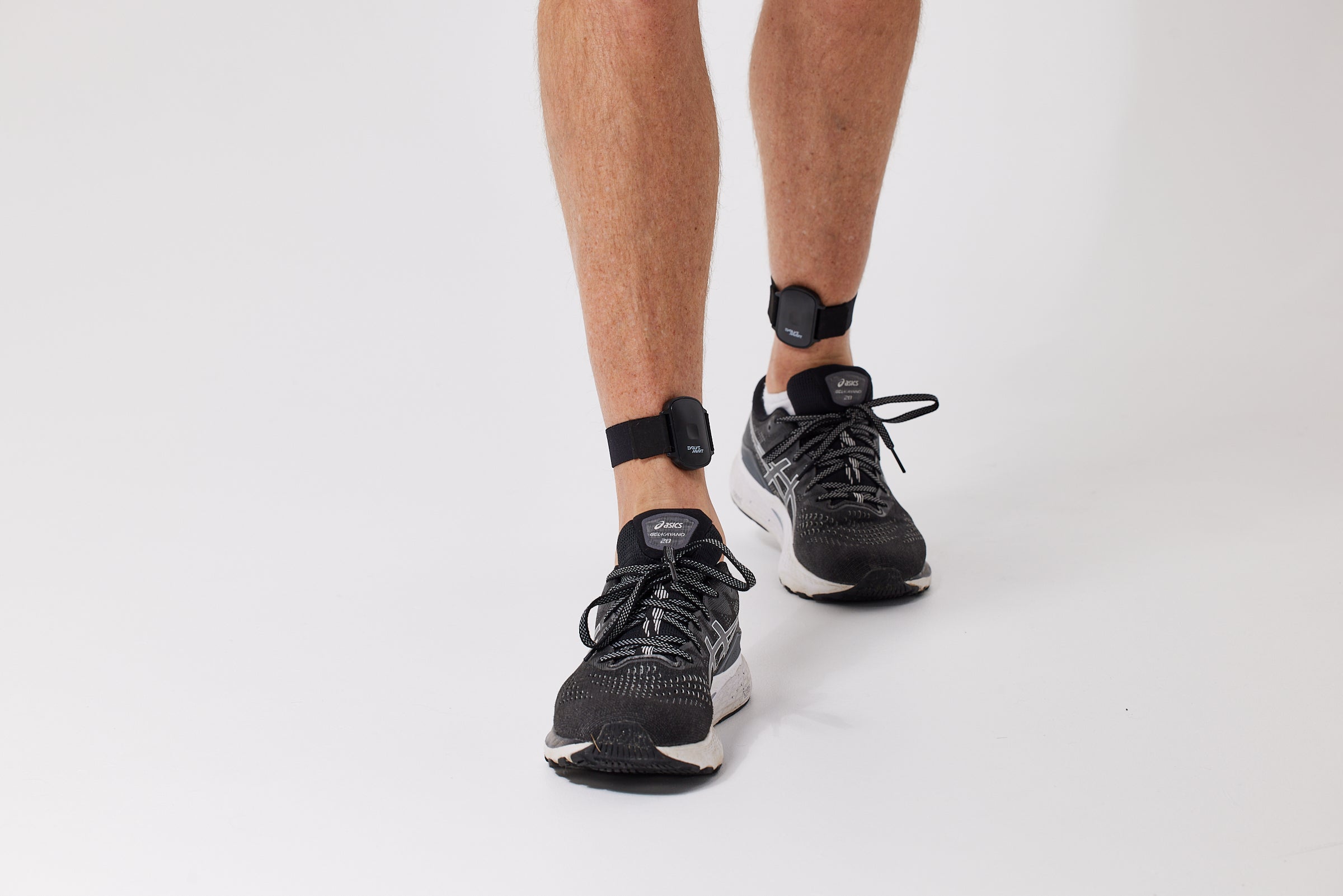
Optimizing Shock Absorption Clinically
Optimising your neuromuscular system through a combination
of verbal prompts, treatment and rehabilitation allows:
- Controlled joint movement
- Eccentric muscle contraction
- Stretch of tendon and fascia
The following tissues contribute to force absorption: muscle, tendon, fascia, cartilage and bone. How much is absorbed in each tissue determines:
- Injury risk
- Workload resilience
- Efficiency of rehabilitation
How EVOLVE MVMT Improves Your Clinical Decision Making
45 year old Social Basketballer with PFJ Pain
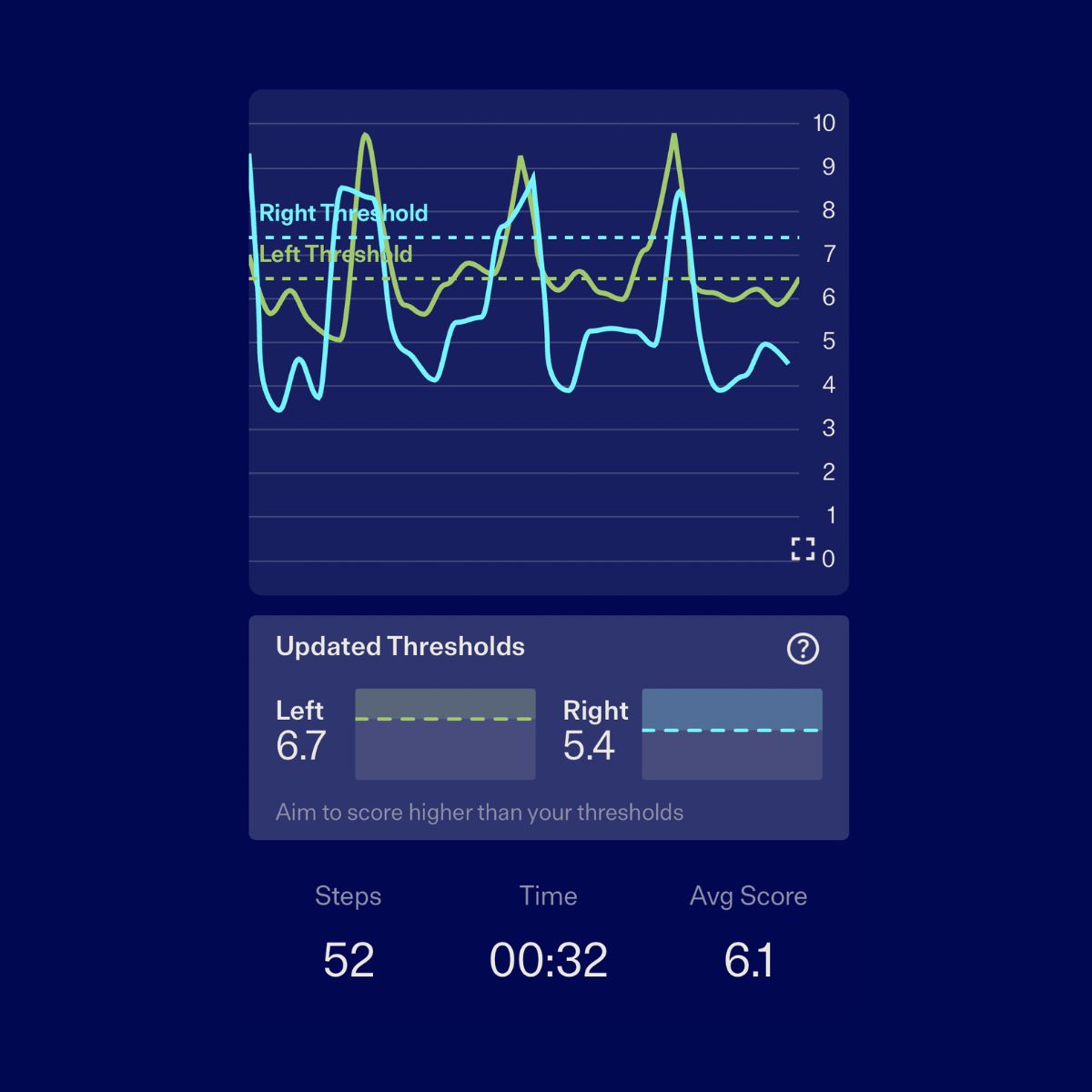
Patient completing normal walking.
Peaks are turning around - walks back and forth on 15ft walkway.
General observation to note from graph - right, injured leg (teal) is lower or performing poorly relative to left.
Summary scores of of 6.7 on left and 5.4 on injured right leg provide exact figures to use objectively for analysis.
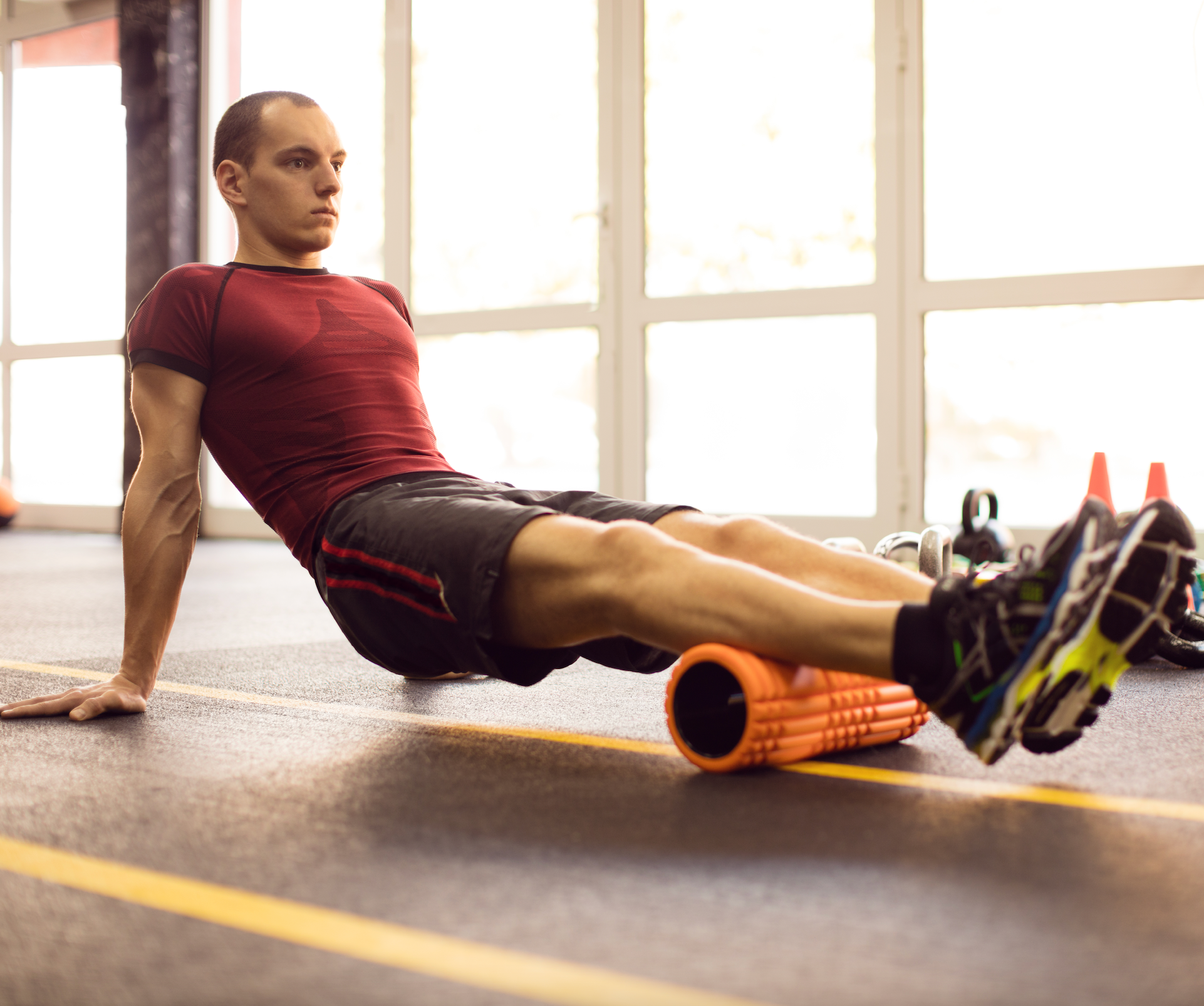
Patient foam rolls quad, hamstring, ITB, calf for total of 5 minutes.
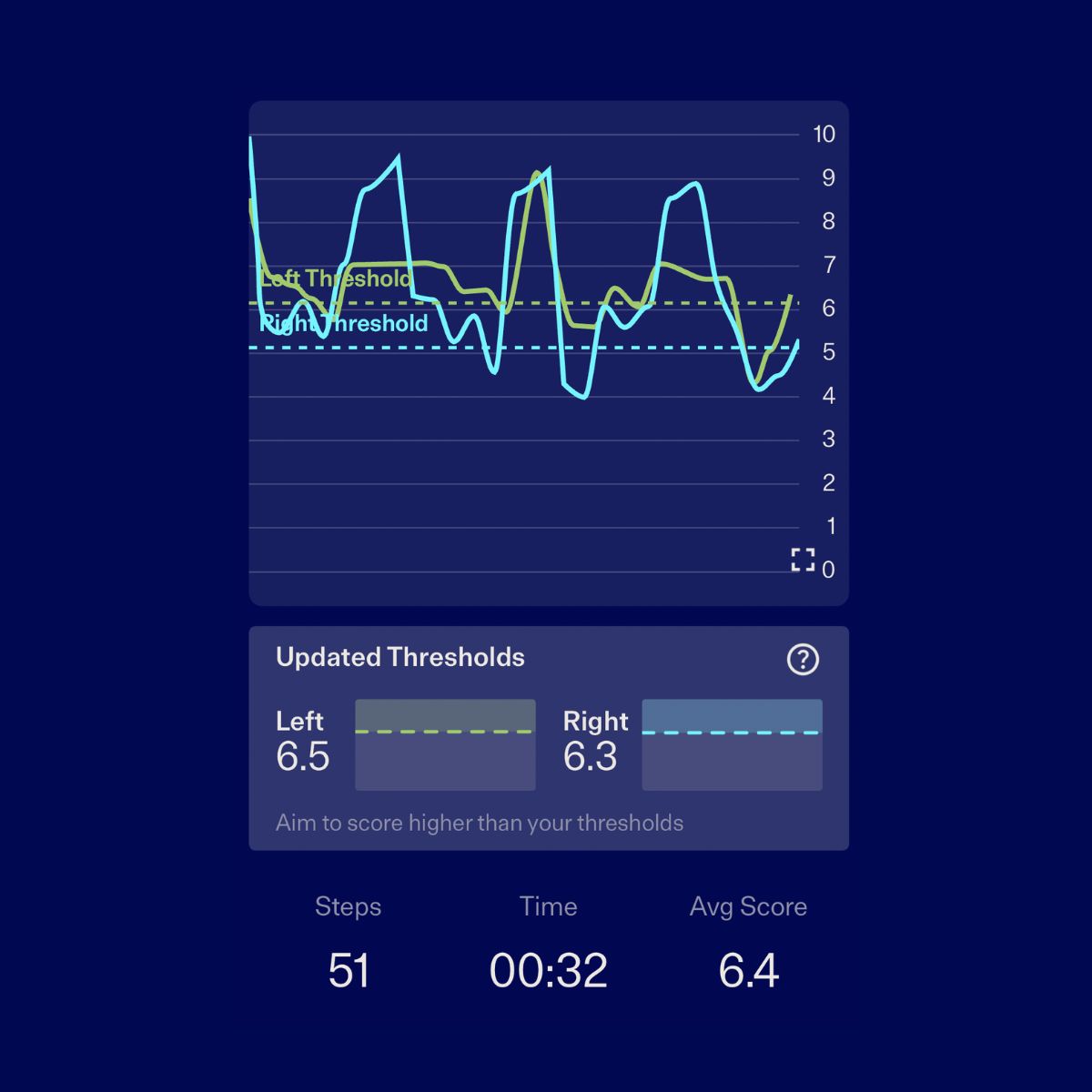
After foam rolling thigh right leg performance improves to almost left leg performance.
Note on the graph the right side has shifted up and is much closer to the left side's performance.
On the summary data the left side stays the same relatively 6.7 to 6.5 (as there was no intervention).
The right side has improved from 5.4 to 6.3 showing that foam rolling is an effective treatment for this patient.
Objectively testing a treatment technique to determine which intervention is most effective for that patient at that point in rehab - to provide more targeted and effective rehabilitation.
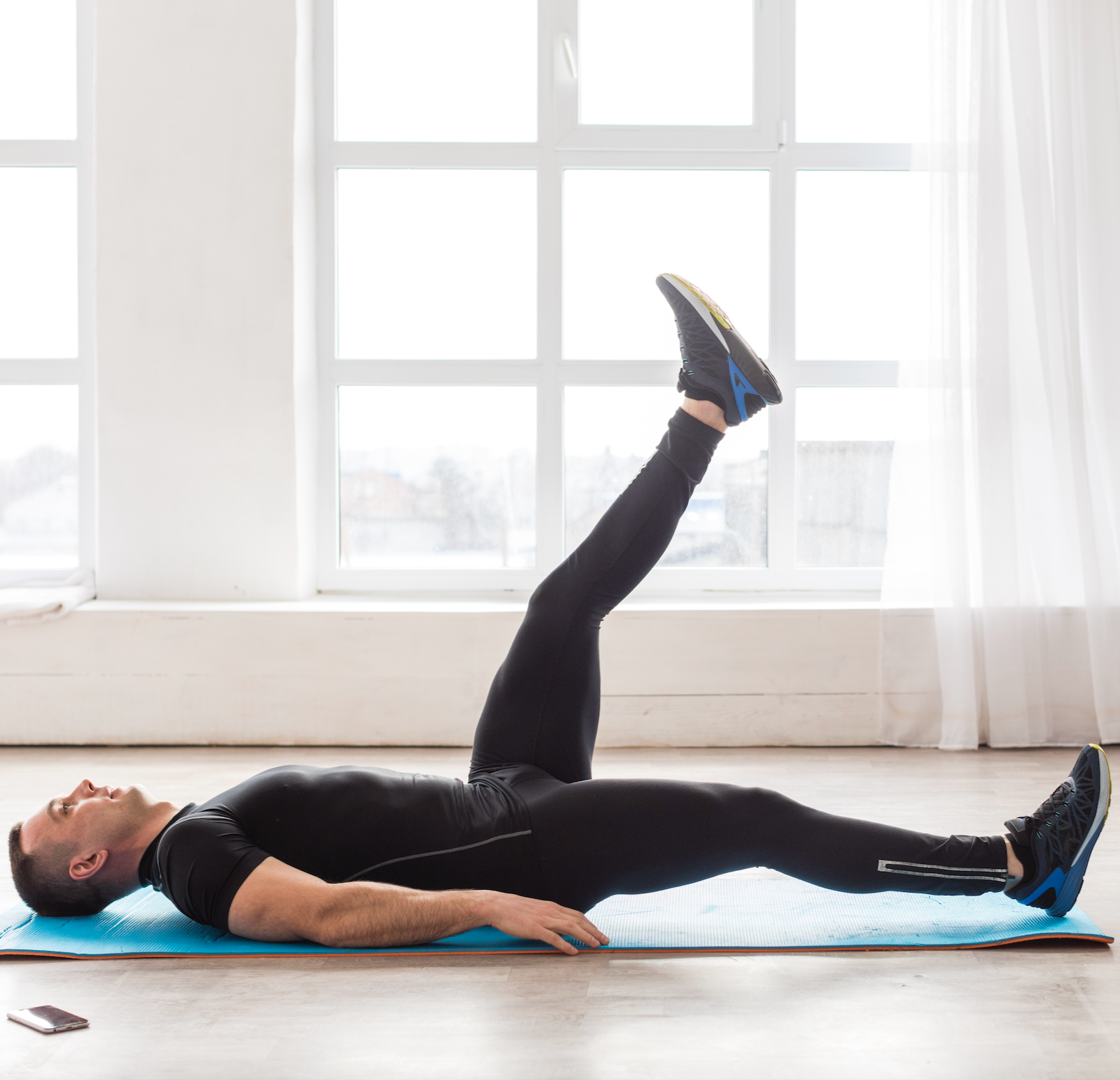
Patient completes VMO activation exercise: 3 sets of 10 'VMO-biased straight leg lift' performed bilaterally.
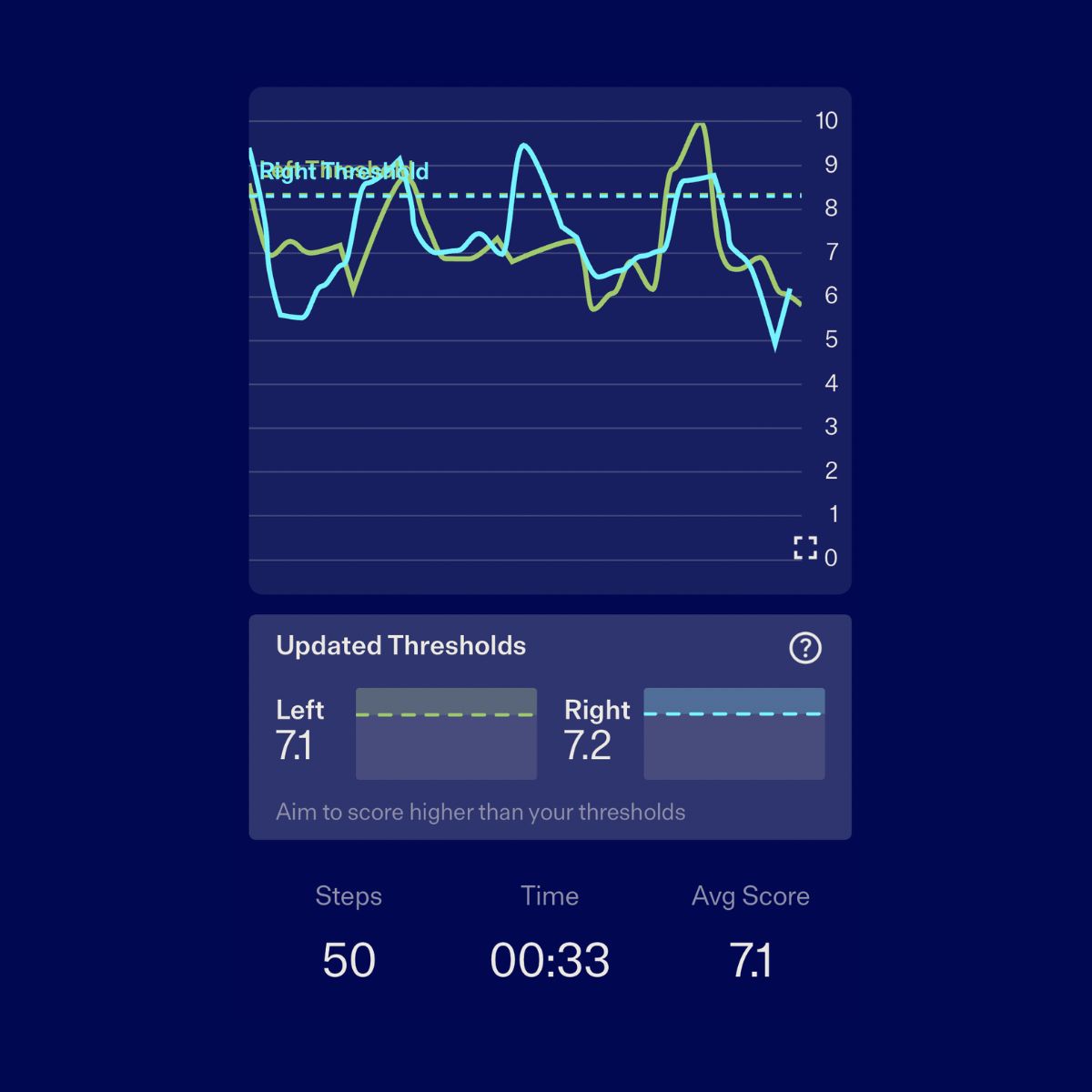
After completing 3 sets of ten each side of a VMO leg lift, the walking performance of both legs has improved and the right is now equal to left.
Note on the graph both sides have shifted up and the lines are almost equal.
On the summary data the left side improves from 6.5 to 7.1 and the right injured side improves from 6.3 to 7.2. Both sides are now performing equally.
Both sides have improved with the right side also now equalized to the left demonstrating that the VMO lift exercise is an effective home exercise for this patient.
Objectively testing a home exercise to determine which intervention is most effective for that patient at that point in rehab - to provide more targeted and effective home rehabilitation.
Patient completing normal walking.
Peaks are turning around - walks back and forth on 15ft walkway.
General observation to note from graph - right, injured leg (teal) is lower or performing poorly relative to left.
Summary scores of of 6.7 on left and 5.4 on injured right leg provide exact figures to use objectively for analysis.
Patient foam rolls quad, hamstring, ITB, calf for total of 5 minutes.
After foam rolling thigh right leg performance improves to almost left leg performance.
Note on the graph the right side has shifted up and is much closer to the left side's performance.
On the summary data the left side stays the same relatively 6.7 to 6.5 (as there was no intervention).
The right side has improved from 5.4 to 6.3 showing that foam rolling is an effective treatment for this patient.
Objectively testing a treatment technique to determine which intervention is most effective for that patient at that point in rehab - to provide more targeted and effective rehabilitation.
Patient completes VMO activation exercise: 3 sets of 10 'VMO-biased straight leg lift' performed bilaterally.
After completing 3 sets of ten each side of a VMO leg lift, the walking performance of both legs has improved and the right is now equal to left.
Note on the graph both sides have shifted up and the lines are almost equal.
On the summary data the left side improves from 6.5 to 7.1 and the right injured side improves from 6.3 to 7.2. Both sides are now performing equally.
Both sides have improved with the right side also now equalized to the left demonstrating that the VMO lift exercise is an effective home exercise for this patient.
Objectively testing a home exercise to determine which intervention is most effective for that patient at that point in rehab - to provide more targeted and effective home rehabilitation.





Running Insights with EVOLVE MVMT
Running Flat
Luke is achieving an average score of 5, both right and left leg performance in very similar with scores in the 4’s and 5’s.
The left leg is underperforming compared to the right.
Running Uphill
Luke's average score has improved to 6.1, as there is less demand on shock absorption when running uphill. Little variation left to right and scores in the 6’s.
Running Downhill
Luke's average score has decreased to 3.0 due to greater effect of gravity and increased need to decelerate. The left leg is performing very poorly and bottoming out with 1’s.
It took higher stress to see that the left leg is quite vulnerable to injury.
This shows that the left leg performance is concerning and needs rehabilitation (i.e., strength and control work).
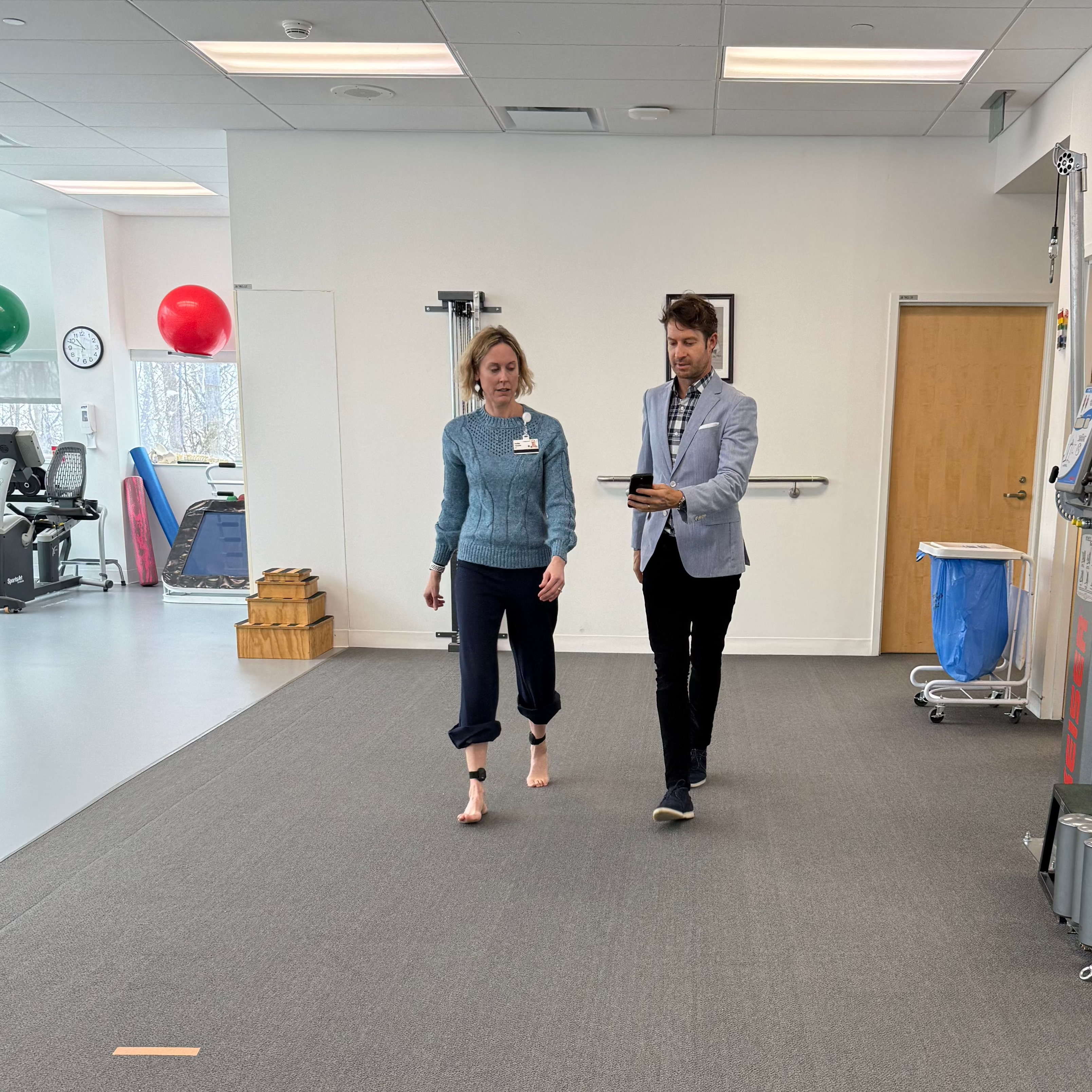
Environments using EVOVLE MVMT:
7 Cleveland Clinic hospitals and tens of physical therapists.
Kaiser Permanente sports physicians.
Each of the following teams have been set up with EVOLVE MVMT for testing in the elite environments:
- Cleveland Cavs
- Boston Celtics
- LA Clippers
- LAFC
EVOLVE MVMT is FDA Registered.
Case Studies
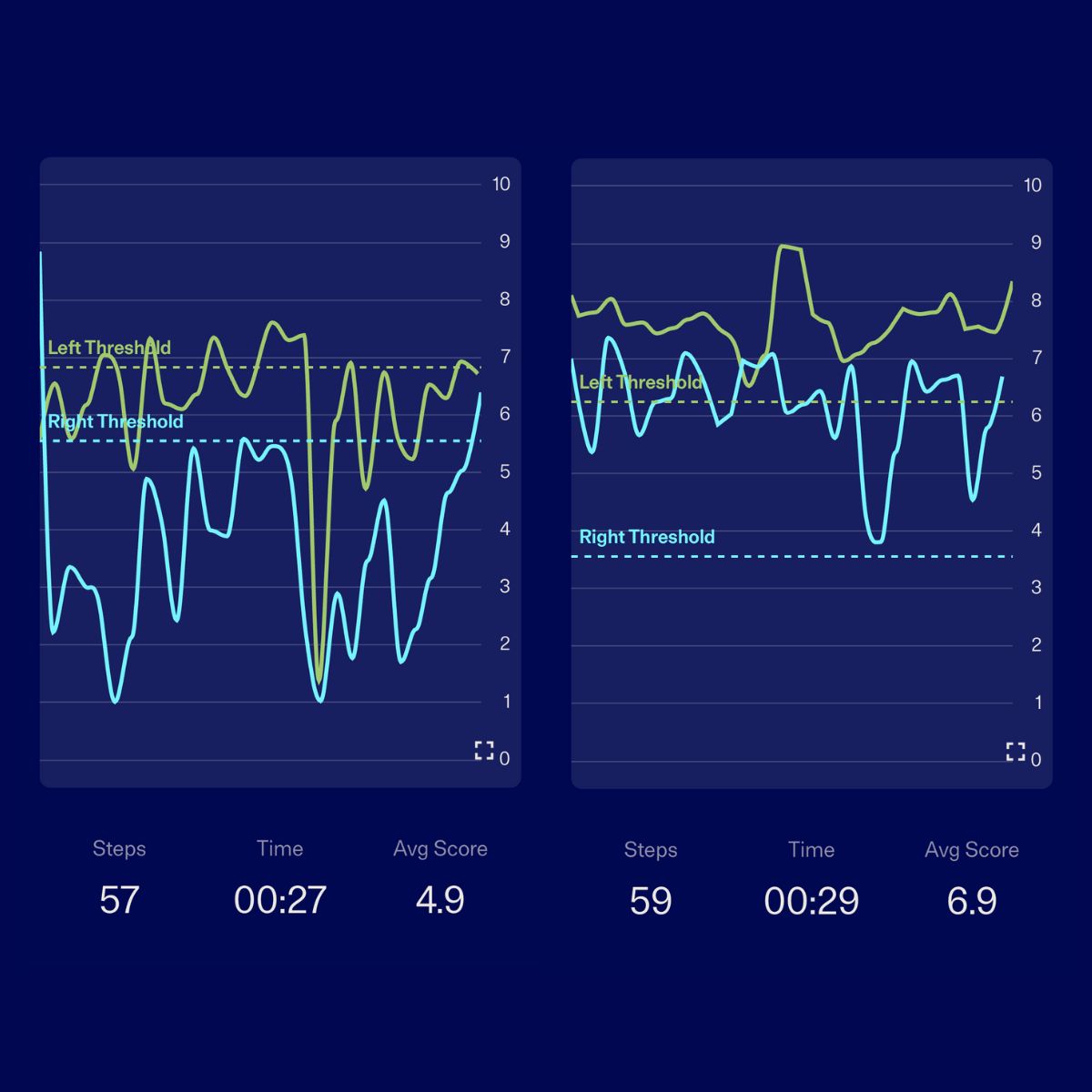
30 year old female, 14 weeks pregnant
Left image: Injured right leg (teal colour), had poorer shock absorption performance - averaging approximately 3/10
Right image: optimised walking technique improves averages to approximately 6/10
All pregnant women increase weight and the value of analyzing walking becomes greater in the third trimester with relaxin release.
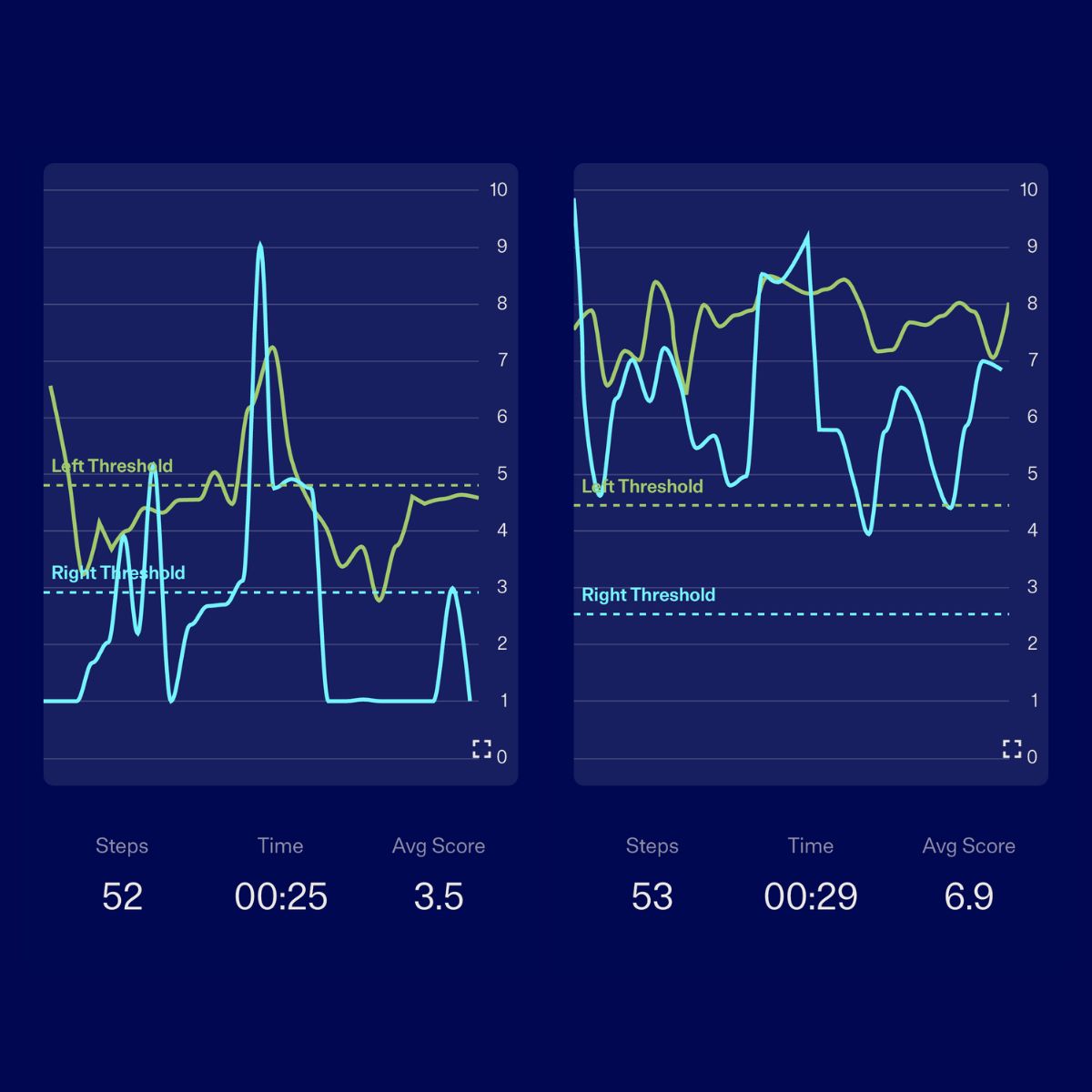
32 year old female, shock absorbs "well"
Left image: walking, patient believed they shock absorbed well. Both are poor, with R worse than L.
Right image: optimised walking technique (purely feedback, walk completed 30 seconds after initial test) improves averages to approximately 6/10 on R and 7.5/10 on L
Patients are unaware of shock absorption performance.
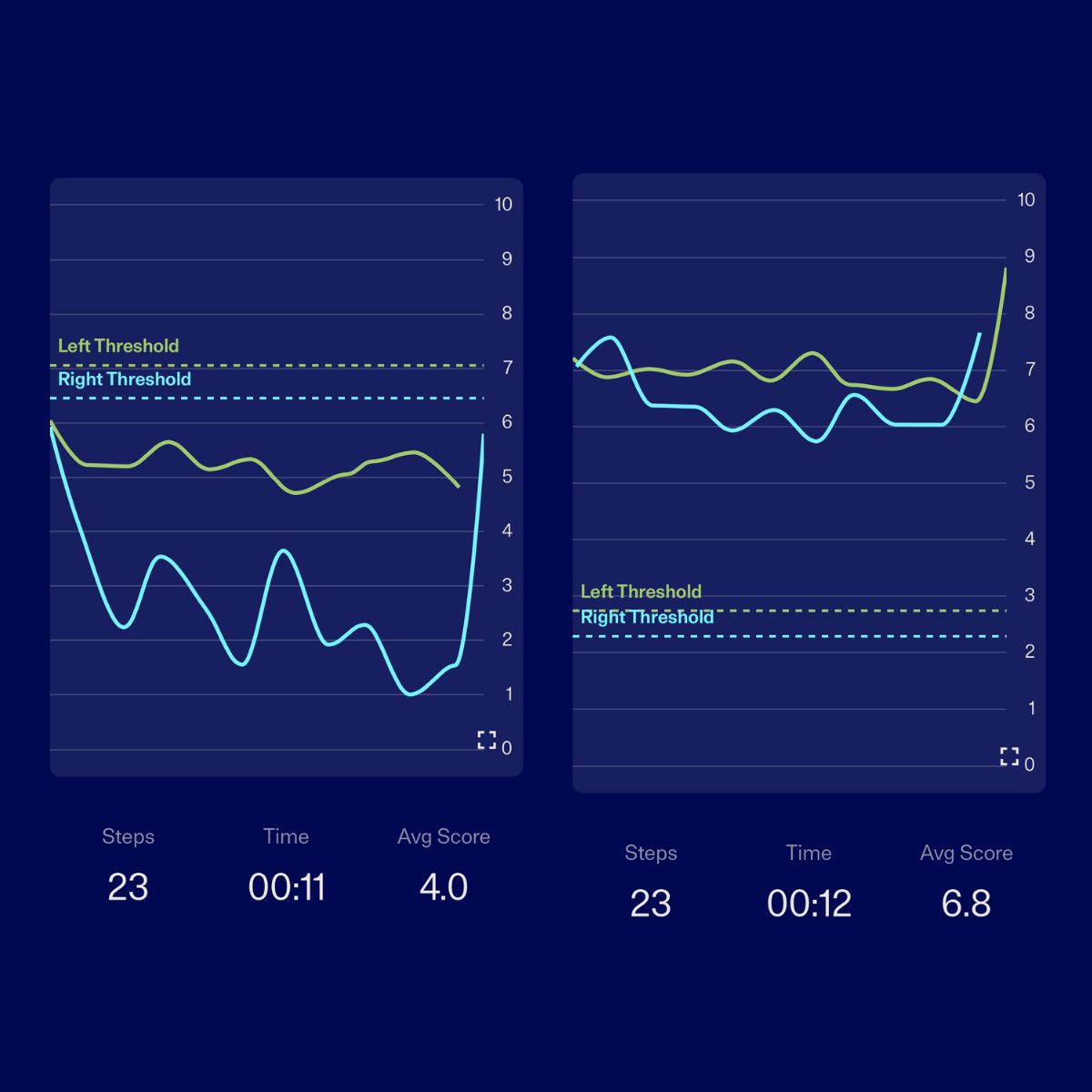
54 year old male, 12 months of pain unresolved pain with PT/Dr
Left image: walking, R hip pain with no significant improvement over 12 months. R leg poor shock absorption averaging 2.5/10
Right image: optimised walking technique (30 seconds after initial test - verbal prompt) improves both side with L improving from 5’s to 7’s. R (injured side) improves from 2.5 to 6’s
Patient has ability to shock absorb, needs rehab but mainly walking technique re-education.
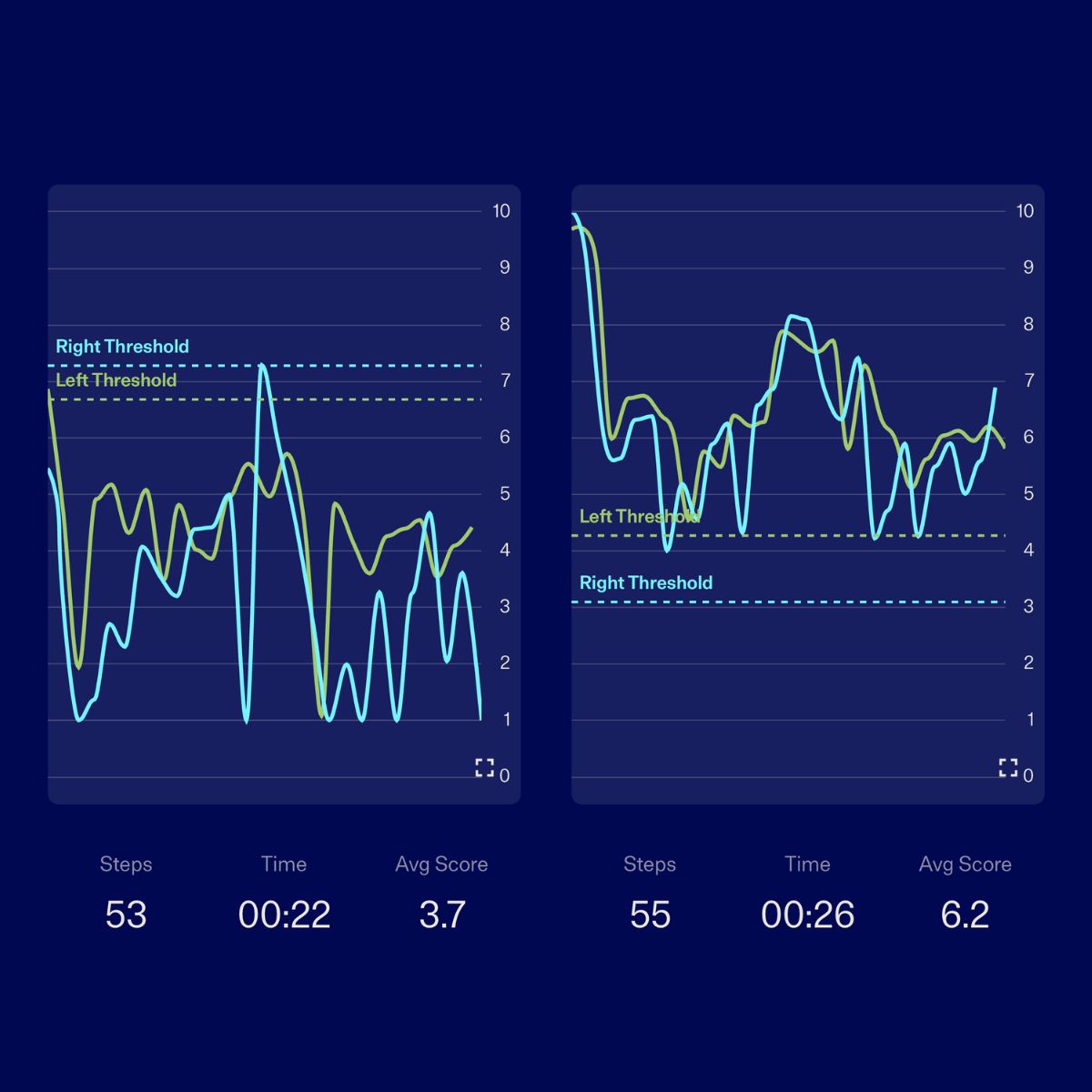
32 year old female, daily runner
Left image: walking R poor shock absorption indicates R leg is stress fracture from 2 years ago.
Right image: walking optimised with one verbal prompt, test performed immediate after first test.
Both legs improve, notably R equalises to L. Patient just needs rehabilitation and gait optimization.
No athlete or patient is rehabilitated to equalize kinematic chain deficits from old injuries.
Only EVOLVE MVMT shows these deficits.
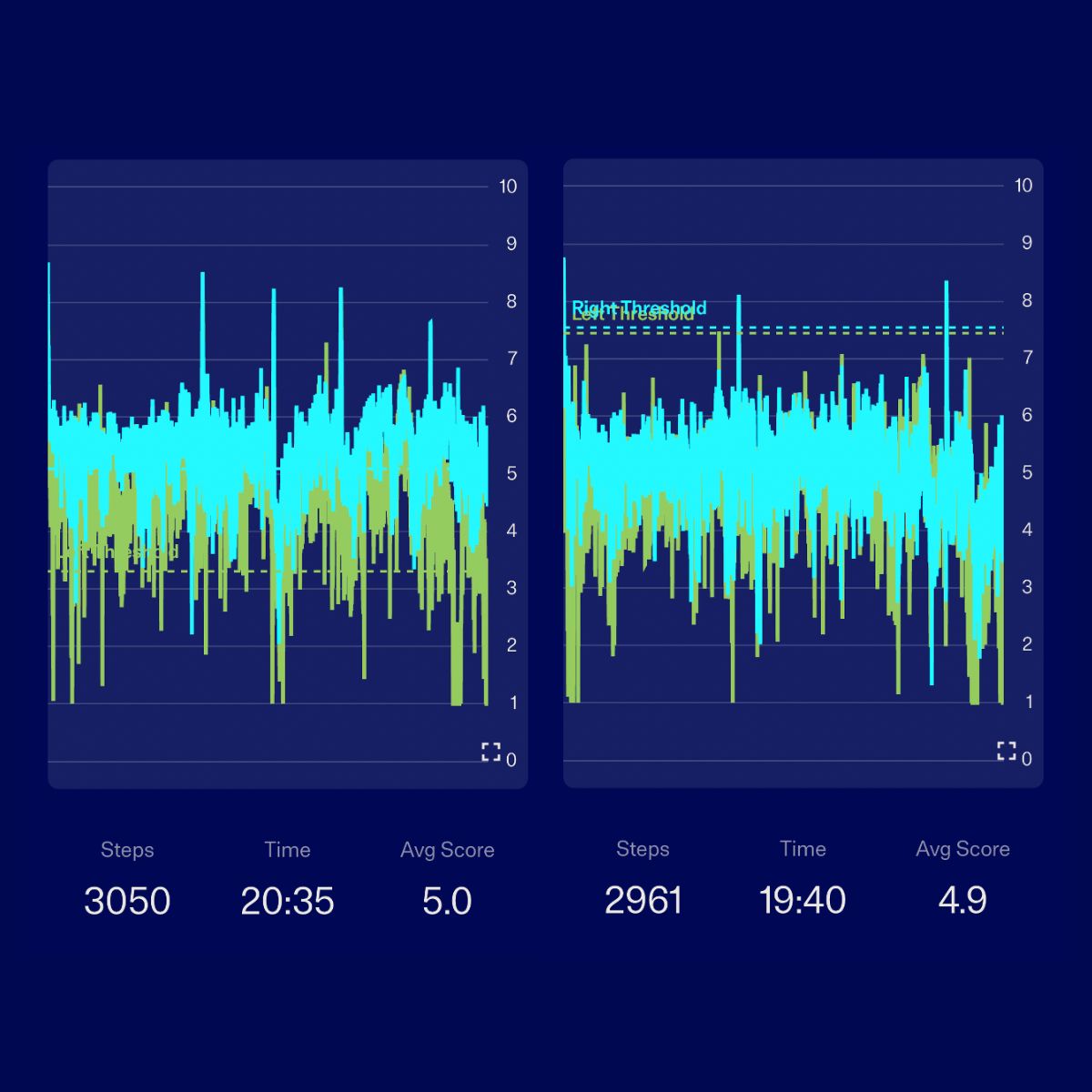
45 year old male, weekly runner
Left image: 20 minute run, R leg performs better than L. Noted by green being visible below teal.
Right image: after activation work pre-run. The L leg improves to being almost equal to R. Observed by less green being seen below.
Average step data within app will also demonstrate this in one data point. Can determine activation work improves running shock absorption performance. If so, provides exercises for rehabilitation, that are proven to be effective for that patient or athlete.
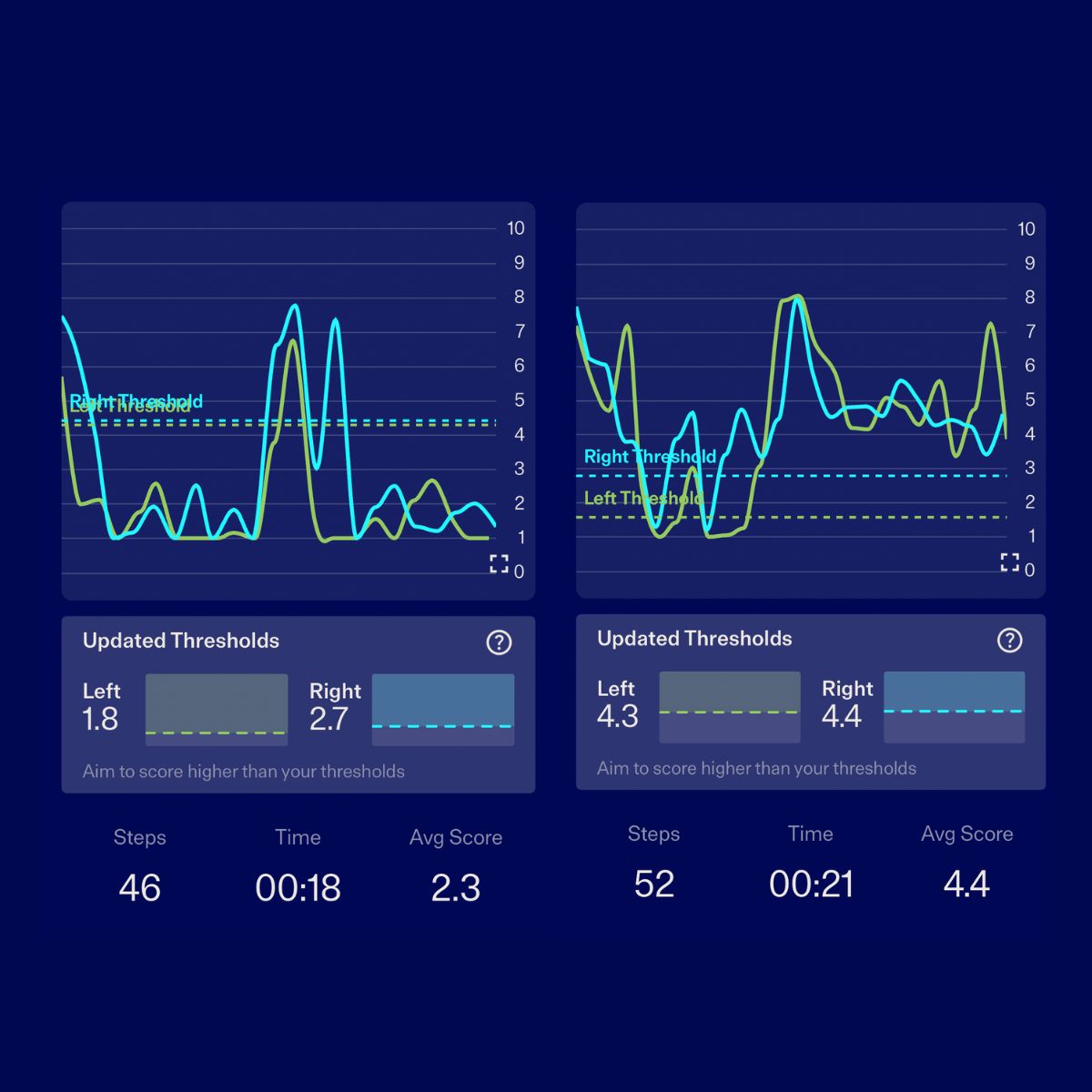
25 year old female, 4 different stress fractures in 3 years
Left Image: Normal Jogging
Right Image: Improved Jogging
Big peak in middle is turning around.
Both legs performing poorly - average 2.2
Improve jogging technique and improves significantly to higher numbers 4.4
Refer to next image for greater detail.
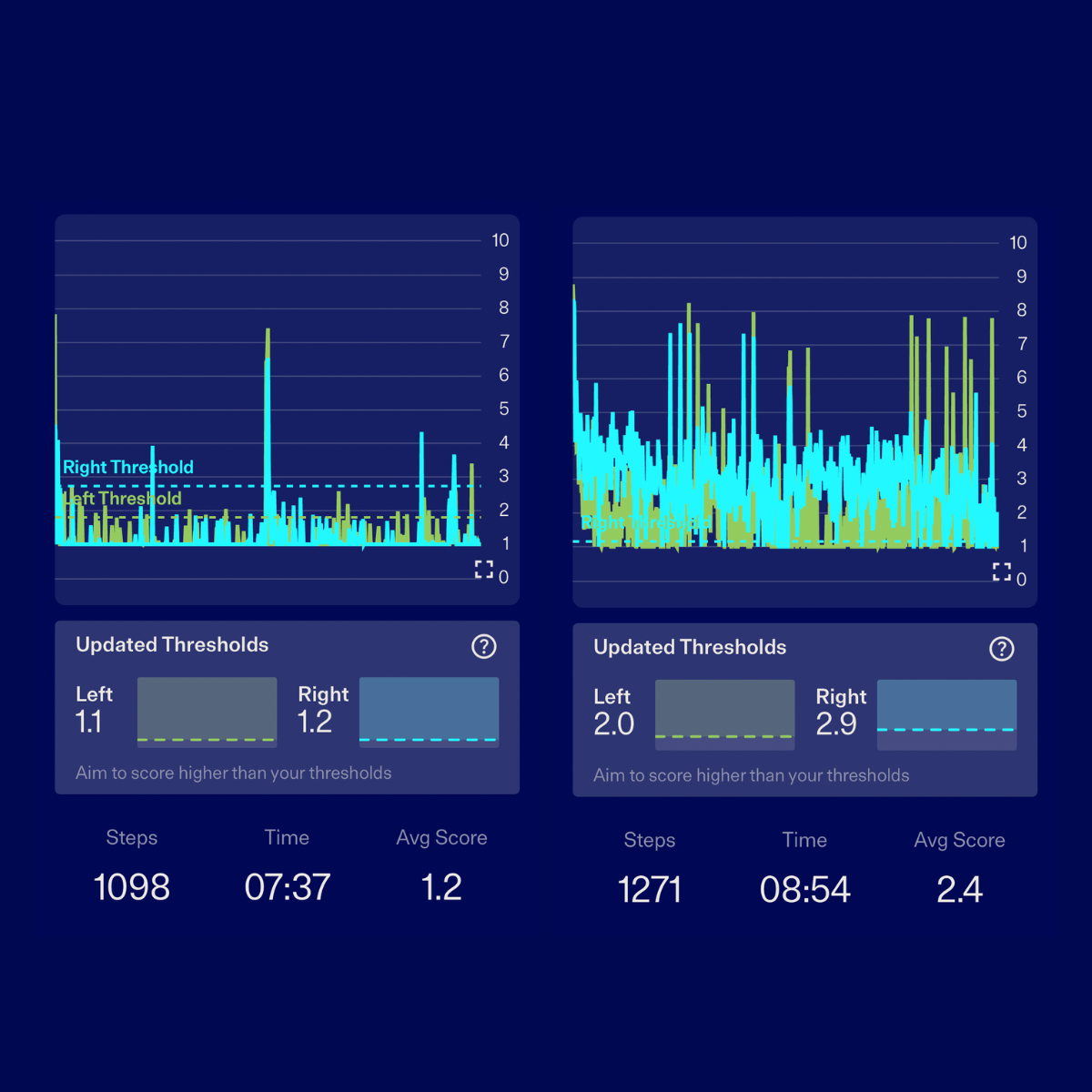
25 year old female, 4 different stress fractures in 3 years
Left Image: Normal Jogging
Right Image: Improved Jogging
Bottoms out with 1’s out of 10 on both legs - extremely poor.
Can not see or hear poor shock absorption.
Improve jogging technique from one verbal prompt and immediate change to 2 and 2.9 - now needs rehab.
EVOLVE MVMT demonstrates what our eyes and current video analysis can not. Six sports physicians and PT’s told her it was her workload. EVOLVE MVMT, after two steps, told her it’s not.
EVOLVE MVMT demonstrates clearly, it’s her shock absorption performance that is the cause of her consistent stress fracture history.
30 year old female, 14 weeks pregnant
Left image: Injured right leg (teal colour), had poorer shock absorption performance - averaging approximately 3/10
Right image: optimised walking technique improves averages to approximately 6/10
All pregnant women increase weight and the value of analyzing walking becomes greater in the third trimester with relaxin release.
32 year old female, shock absorbs "well"
Left image: walking, patient believed they shock absorbed well. Both are poor, with R worse than L.
Right image: optimised walking technique (purely feedback, walk completed 30 seconds after initial test) improves averages to approximately 6/10 on R and 7.5/10 on L
Patients are unaware of shock absorption performance.
54 year old male, 12 months of pain unresolved pain with PT/Dr
Left image: walking, R hip pain with no significant improvement over 12 months. R leg poor shock absorption averaging 2.5/10
Right image: optimised walking technique (30 seconds after initial test - verbal prompt) improves both side with L improving from 5’s to 7’s. R (injured side) improves from 2.5 to 6’s
Patient has ability to shock absorb, needs rehab but mainly walking technique re-education.
32 year old female, daily runner
Left image: walking R poor shock absorption indicates R leg is stress fracture from 2 years ago.
Right image: walking optimised with one verbal prompt, test performed immediate after first test.
Both legs improve, notably R equalises to L. Patient just needs rehabilitation and gait optimization.
No athlete or patient is rehabilitated to equalize kinematic chain deficits from old injuries.
Only EVOLVE MVMT shows these deficits.
45 year old male, weekly runner
Left image: 20 minute run, R leg performs better than L. Noted by green being visible below teal.
Right image: after activation work pre-run. The L leg improves to being almost equal to R. Observed by less green being seen below.
Average step data within app will also demonstrate this in one data point. Can determine activation work improves running shock absorption performance. If so, provides exercises for rehabilitation, that are proven to be effective for that patient or athlete.
25 year old female, 4 different stress fractures in 3 years
Left Image: Normal Jogging
Right Image: Improved Jogging
Big peak in middle is turning around.
Both legs performing poorly - average 2.2
Improve jogging technique and improves significantly to higher numbers 4.4
Refer to next image for greater detail.
25 year old female, 4 different stress fractures in 3 years
Left Image: Normal Jogging
Right Image: Improved Jogging
Bottoms out with 1’s out of 10 on both legs - extremely poor.
Can not see or hear poor shock absorption.
Improve jogging technique from one verbal prompt and immediate change to 2 and 2.9 - now needs rehab.
EVOLVE MVMT demonstrates what our eyes and current video analysis can not. Six sports physicians and PT’s told her it was her workload. EVOLVE MVMT, after two steps, told her it’s not.
EVOLVE MVMT demonstrates clearly, it’s her shock absorption performance that is the cause of her consistent stress fracture history.







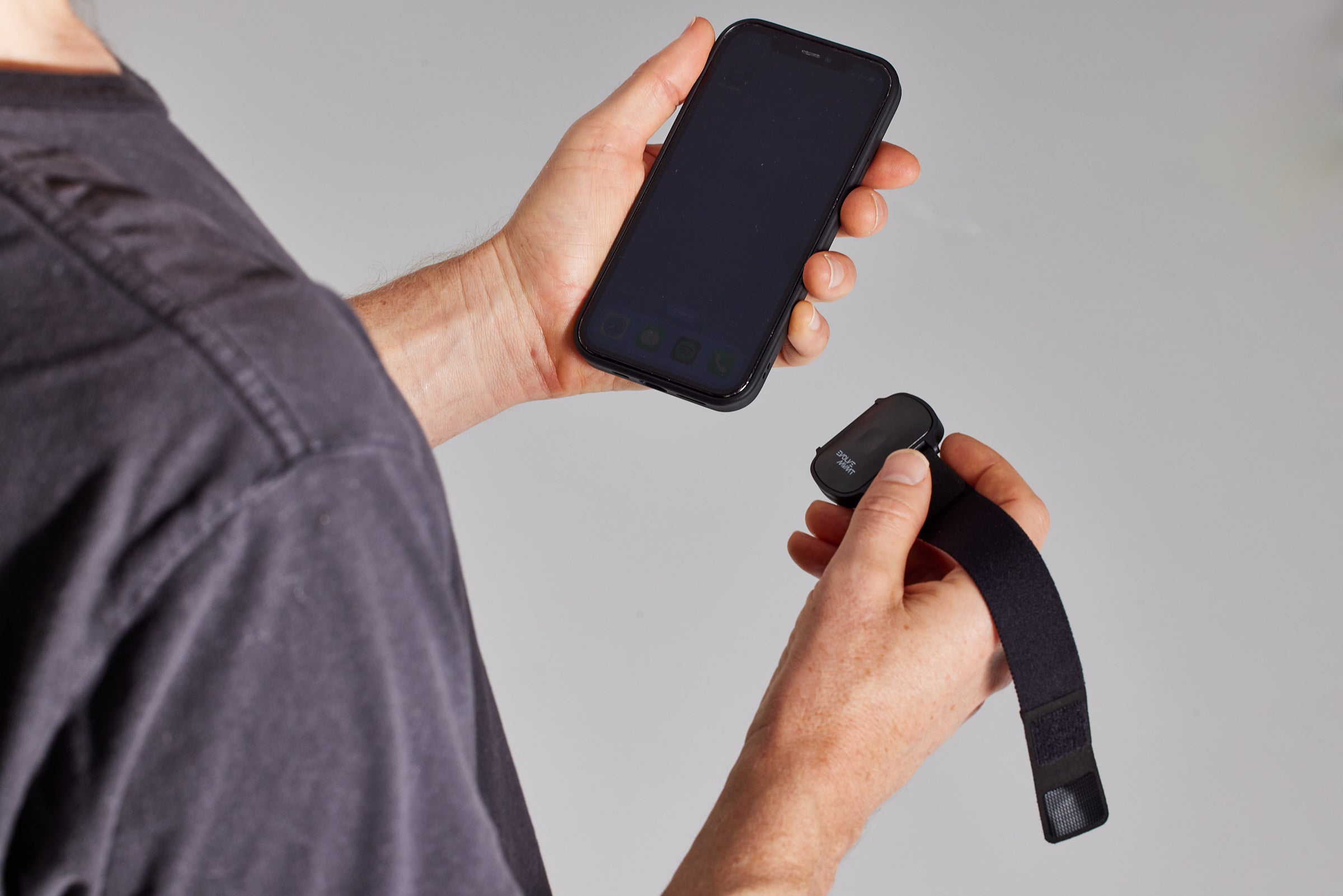
Using EVOLVE MVMT

